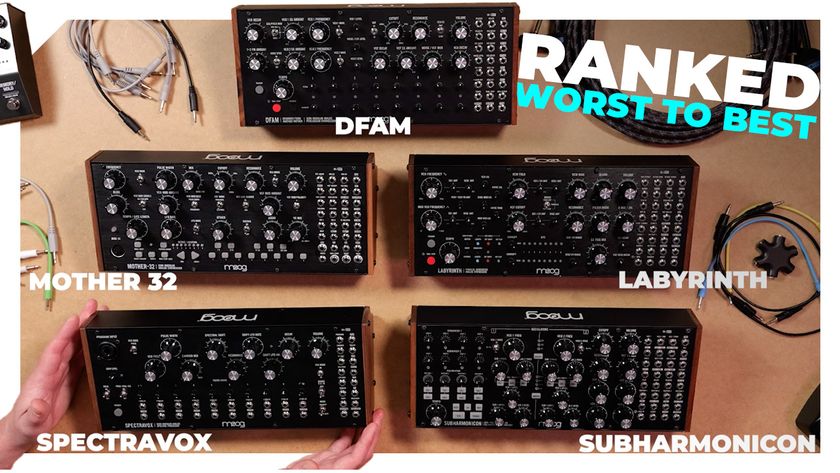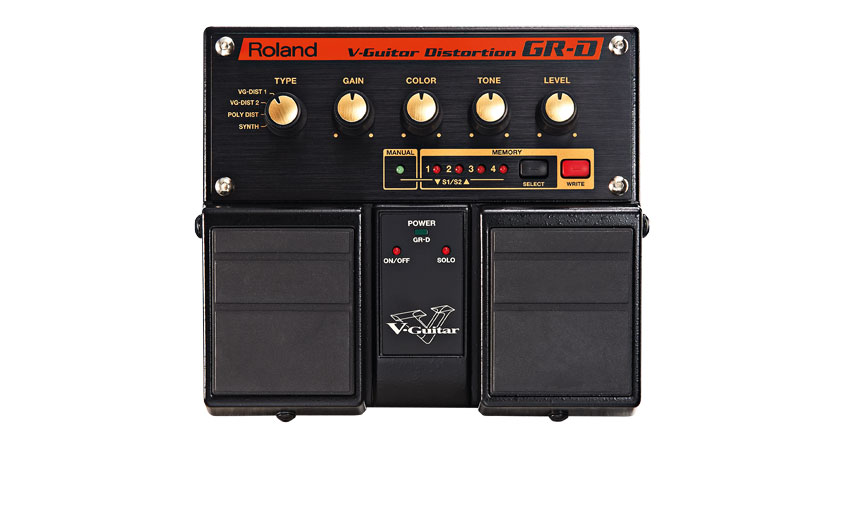MusicRadar Verdict
A cost-effective way to buy into the V-Guitar world, with a useful range of distortion textures and a synth sound thrown in.
Pros
- +
Different distortions than a conventional pedal. Solo function.
Cons
- -
Full potential is not reached if you're using a conventional guitar.
MusicRadar's got your back
For players willing to embrace it, Roland's V-Guitar system offers an awful lot - it can deliver many sounds that are simply not available from a conventional pedal and amp setup. Now the GR-D V-Guitar Distortion offers a portion of V-Guitar technology in a Boss Twin Pedal chassis.
Roland's V-Guitar system is not exactly a budget buy, and requires the use of a guitar equipped with a divided pickup, such as Roland's GK-3, and its 13-pin connection - a further investment that can put many off.
That may have been the end of the matter at one time, but not any more: if you'd like some of those sounds without shelling out for a full-blown VG-99 or would like access to them from a conventional electric guitar, Roland has made it possible with the release of a new pedal, the GR-D V-Guitar Distortion.
Build
It has a divided-pickup guitar input, but also has a pair of standard jack inputs, plus outputs to connect to an amp or pedals.
If you're using a standard guitar, you simply connect it to the L (mono) input and use the jack outputs for either stereo or mono operation. Roland does point out, though, that you won't be able to enjoy the full potential of the GRs using a conventional guitar, since the signal from each string can't be processed individually.
"The GR-D offers four effects types: VG Distortion 1, VG Distortion 2, Poly Distortion and Synth"
If you are using a GK pickup, there's also a Guitar Out socket, so you can send the normal clean pickup signals of the GK-compatible guitar to another device - perhaps an effects unit, the output of which can then be connected to the GR pedal's jack inputs in a send/ return scenario, if desired.
The pedal features four different sounds that you can select and tweak manually. Besides this manual mode, you also get four user memories that store and recall any sound you create, regardless of how the knobs are physically set. These are cycled with a single button or accessed by the patch up and down buttons if you're using the pedal with a GK pickup.
The GR-D offers four effects types: VG Distortion 1, VG Distortion 2, Poly Distortion and Synth. There are gain, Color and tone knobs, the functions of which change depending on the selected effect. For the distortion effects, the gain and tone knobs offer what you'd expect - adjusting the amount of distortion and brightening the sound respectively - but for the Synth sound their functions adjust the synth waveform and the synth's filter cut-off frequency. The Color knob does something different for each effect, and the right-hand footswitch offers a useful boost to the sound for soloing.
Sounds
With a conventional guitar, you get four different distortion effects, covering a wide range of sounds that go beyond the 'overdriven amp' style. It's obvious this isn't a conventional distortion pedal - noise is absent when not playing, even with loads of gain, and there's a nice individual string clarity.
Using a divided pickup with its 'humbucker for each string' configuration and plugging in via the 13-pin connection with a Roland GK-3-equipped Yamaha Pacifica, though, it's clear the pedal is optimised for this type of operation.
"Poly Distortion is derived from the polyphonic distortion in Roland's early guitar synths"
String clarity is more pronounced, with separate distortion processing for each string eliminating the atonal harmonic artefacts of mono distortion - this is most apparent in the case of Poly Distortion, which is derived from the polyphonic distortion in Roland's early guitar synths, and designed to deliver distortion while letting chords ring and resonate.
VG Distortion 2 has an octaver effect that you don't hear with a conventional pickup, but the most acute sonic difference between using conventional and divided pickups comes when selecting the Synth sound.
This sounds like a proper analogue synth, complete with filter squelch, and raises the pitch an octave with the solo switch engaged. With a normal guitar, it sounds like a weird fuzzy distortion, with the solo switch simply making it louder. Overall, you get four different, focused sounds using the divided pickup, but your usual guitar will still give you a useful range of unusual distortion voices.
We do like the idea that Roland has equipped this pedal to make some part of its VG and GR sounds available to anyone playing a regular guitar. However, that is not the primary focus here - while this pedal can certainly add something a little different to your tonal palette and still fit into your basic pedal setup, their full sonic potential is not realised in this way.
"With a divided pickup, buying this pedal makes much more sense"
What's more, it's a lot pricier than conventional stompboxes, and although that probably reflects the fact that it's filled with more expensive electronic gubbins than most, you'd have to have a good listen and think very hard about adding it to your 'board.
With a divided pickup though, buying this pedal makes much more sense. This pedal really does respond differently and provide a deeper, more stunning range of effects if you're using a GK pickup.
Not only will you will get optimum use out of it in that scenario but it offers an ideal opportunity to buy into the V-Guitar world for a lot less than shelling out for a VG-99. It could be a worthwhile buy if you already have a guitar fitted with a GK pickup or are thinking of adding one to your guitar and dipping your toe in the VG/GR water.
Trevor Curwen has played guitar for several decades – he's also mimed it on the UK's Top of the Pops. Much of his working life, though, has been spent behind the mixing desk, during which time he has built up a solid collection of the guitars, amps and pedals needed to cover just about any studio session. He writes pedal reviews for Guitarist and has contributed to Total Guitar, MusicRadar and Future Music among others.

“The screaming was deafening!”: How a Japanese tour transformed the career of a weird little band known as the ‘Beatles of hard rock’

Ranked: Moog’s semi-modular ‘Mother’ synths from worst to best

“If it wasn’t for that song, that would have been the end of the band”: How one track’s sudden gear-switch led Coldplay into their imperial phase











